Key takeaways
- Interactive timelines enhance historical learning by engaging various learning styles through multimedia elements, creating emotional connections with the material.
- For activist teachers, these timelines serve as tools to empower students to engage with and question traditional narratives, fostering a commitment to social justice.
- Effective timeline creation involves carefully selecting content, incorporating storytelling, and ensuring a clear, engaging flow to facilitate user exploration.
- Sharing timelines with students boosts their engagement, encourages dialogue, and promotes confidence in diverse learners as they navigate the content at their own pace.
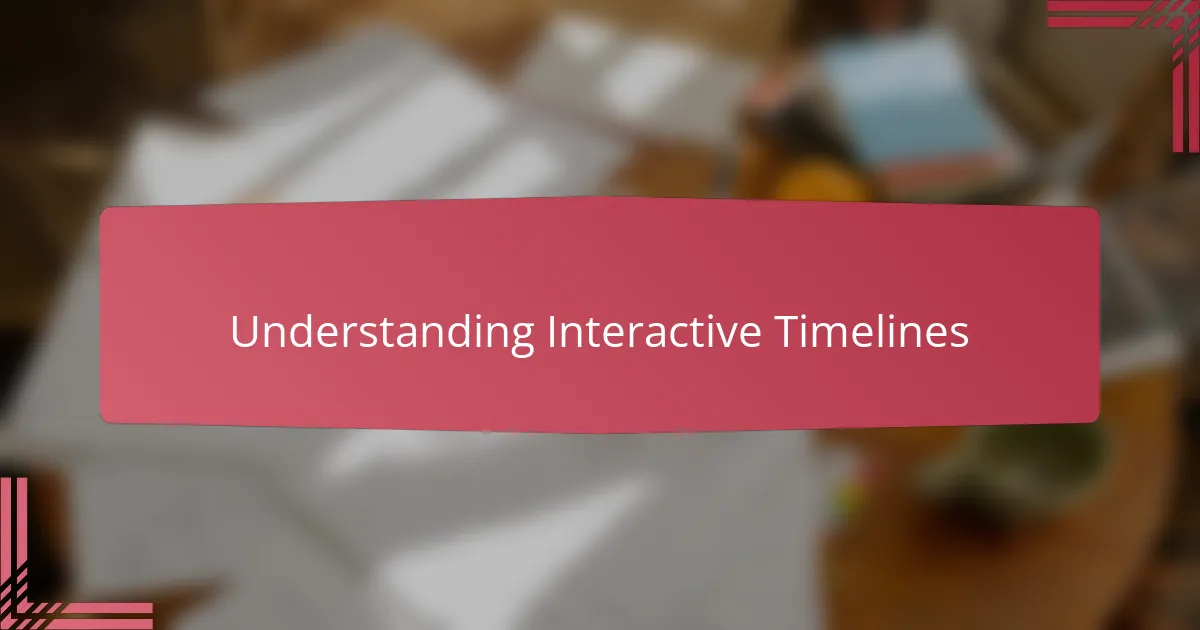
Understanding Interactive Timelines
Interactive timelines breathe life into history by allowing users to explore events in a dynamic way. I remember the first time I created one—it was like watching pieces of a puzzle come alive right before my eyes. Have you ever thought about how a simple click can transform a static list of dates into a captivating story?
What truly fascinates me about interactive timelines is their ability to layer information without overwhelming the viewer. By revealing details gradually, they invite curiosity rather than boredom. I found this especially powerful when teaching complex social movements, where understanding the sequence and context matters deeply.
Have you noticed how interactive elements engage different learning styles? When I incorporated multimedia like images, videos, and links within the timeline, I saw students connect emotionally with the material. It’s not just about dates; it’s about experiencing history as an evolving conversation.
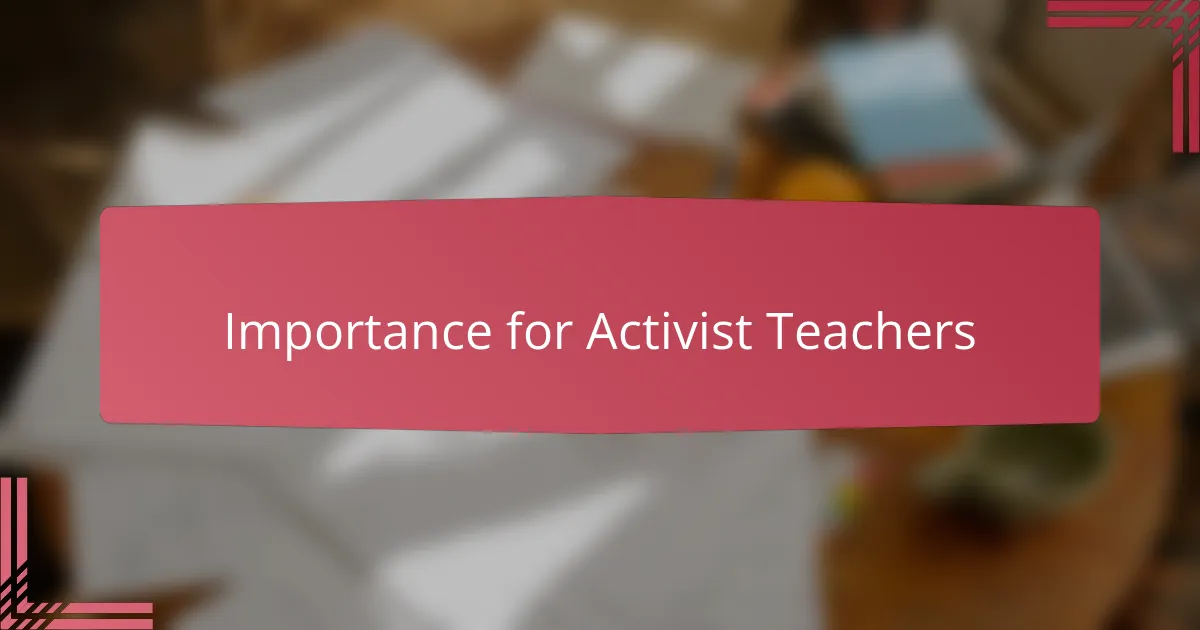
Importance for Activist Teachers
For activist teachers, interactive timelines are more than just teaching tools—they become a way to spotlight voices often overlooked in traditional narratives. I’ve seen firsthand how this approach empowers students to question dominant histories and see activism as a living, breathing process.
When I used timelines to trace grassroots movements, the students didn’t just memorize dates; they connected with the struggles and triumphs behind them. Have you ever noticed how this deep connection fuels a stronger commitment to justice and change in the classroom?
What excites me most is how interactive timelines invite ongoing dialogue, encouraging students and teachers alike to add new perspectives. This dynamic quality reflects the very nature of activism—always evolving and calling for participation.
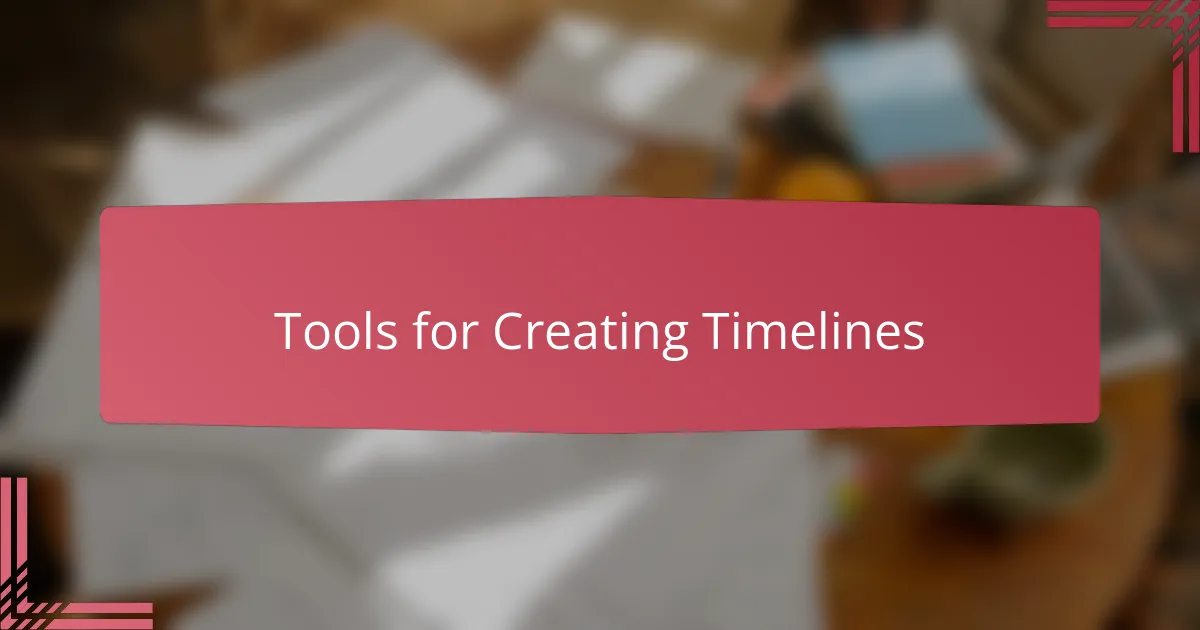
Tools for Creating Timelines
When I first started exploring tools for creating timelines, I was overwhelmed by the sheer variety available—from simple drag-and-drop apps to sophisticated platforms supporting multimedia integration. Have you ever tried using a timeline tool that promised simplicity but ended up limiting your creativity? That frustration pushed me to search for software that balanced ease of use with rich features.
One tool that truly stood out to me was Timeline JS. Its ability to incorporate videos, images, and links seamlessly made the stories I wanted to tell come alive. I remember how rewarding it felt when students interacted with a timeline I built using it—they were actually clicking through and discovering content on their own, rather than just passively receiving information.
Of course, not every tool fits every lesson. Sometimes, I opted for simpler options like Tiki-Toki or Sutori, especially when I needed to create timelines quickly for spontaneous classroom discussions. Finding the right tool often comes down to matching its features with your teaching goals—and trust me, that process taught me as much about storytelling as the timelines themselves.
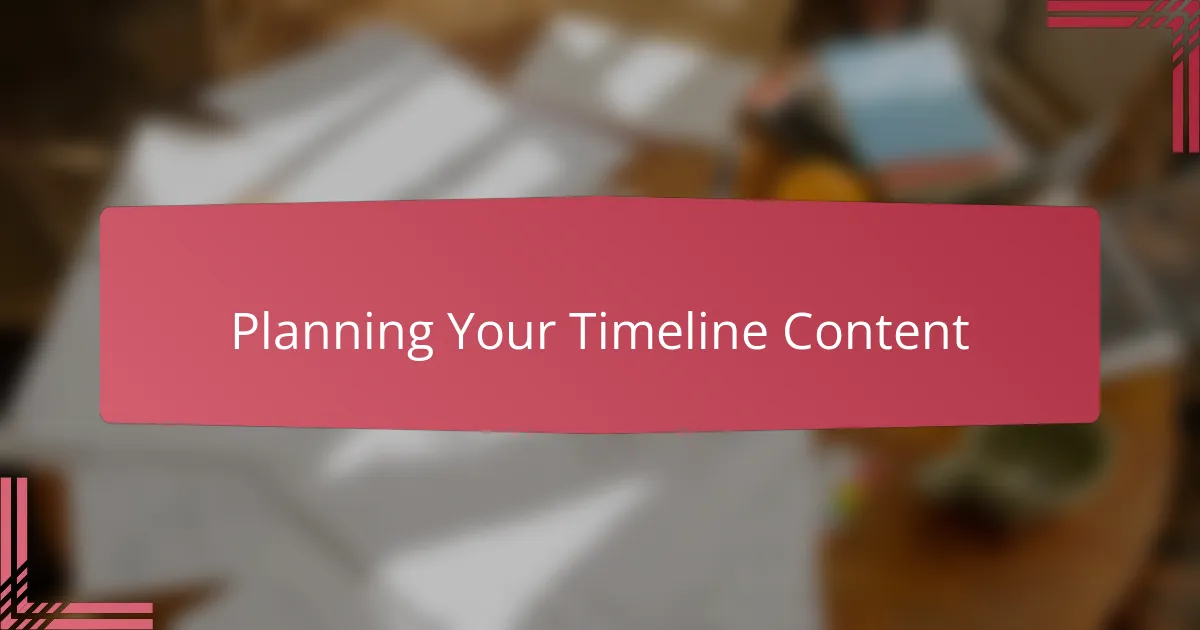
Planning Your Timeline Content
Deciding what to include in your timeline felt like curating a museum exhibit—every event had to earn its place. I often asked myself, “Which moments truly shaped the movement, and which details might distract?” Striking that balance took patience, but it made the final product much more impactful.
I also found that grouping related events into thematic clusters helped me see the bigger picture without losing the nuance. For instance, when tracing a protest’s evolution, I separated organizers’ key decisions from broader social reactions. Have you tried that approach? It helped me keep the timeline both clear and rich.
Choosing content isn’t just about facts; it’s about storytelling. I learned that weaving personal stories and lesser-known voices alongside major milestones gave the timeline a heartbeat. When students discovered those hidden gems, their curiosity and empathy soared in ways I hadn’t anticipated.
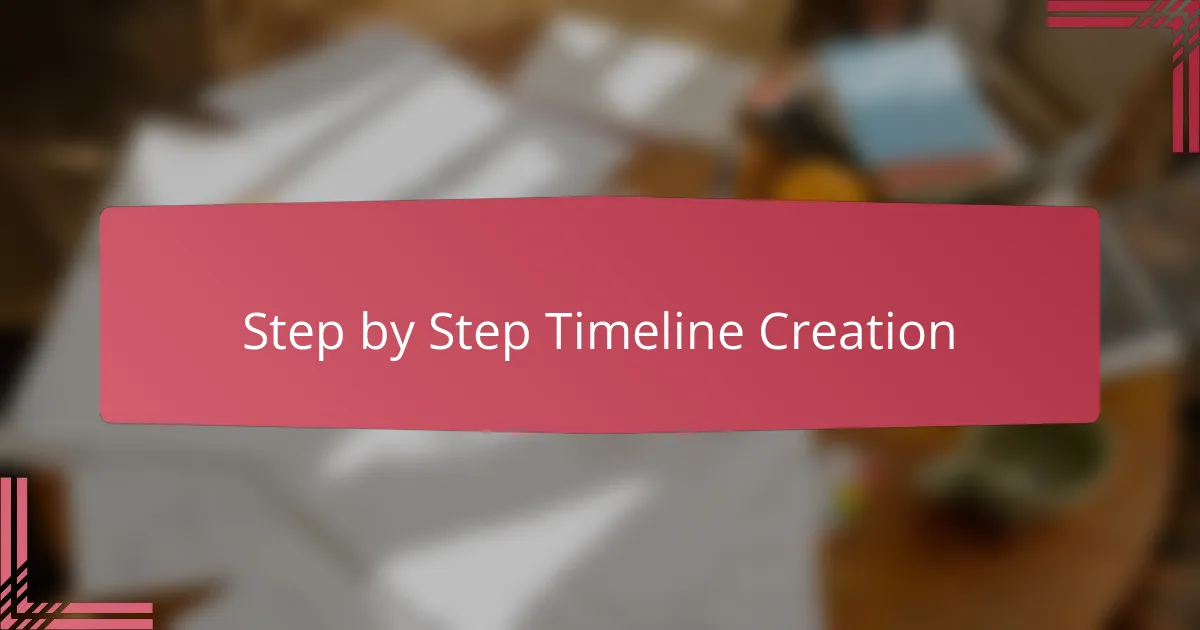
Step by Step Timeline Creation
Starting my timeline felt a bit like piecing together a jigsaw puzzle without the picture on the box. I began by laying out the key dates in chronological order, but soon realized that simply listing events wouldn’t keep viewers engaged. Have you ever noticed how a timeline needs a clear, logical flow to guide someone through a story without overwhelming them? That’s when I started adding layers, like brief descriptions and images, to each point.
Next came the challenge of pacing. I learned that spacing out events and using interactive pop-ups lets users explore deeper without feeling rushed or lost. For example, when I embedded short videos explaining pivotal moments, students paused to watch and reflect, which was far more effective than skimming through text alone. It made me think: how often do we expect learners to absorb complex ideas in one go?
Finally, I tested the timeline repeatedly, tweaking the sequence and interactive elements based on feedback. One time, a student suggested adding a link to a contemporary activist’s website right after a historical event, connecting past and present in a meaningful way. That moment reminded me that creating timelines is not just about presenting facts but crafting a living conversation that invites ongoing discovery.
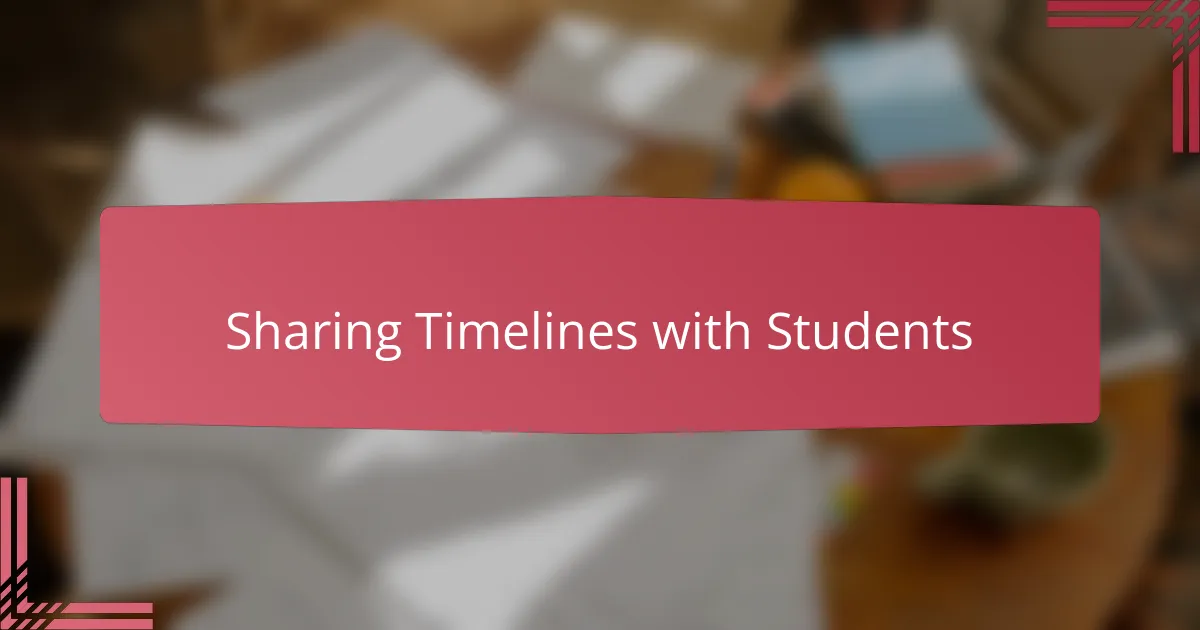
Sharing Timelines with Students
Sharing timelines with students opened up a new way for me to see their engagement deepen. When I first shared an interactive timeline in class, I was struck by how the students didn’t just passively scroll—they explored on their own, clicking on details that piqued their curiosity. Have you ever felt that moment when something you created sparks genuine interest? That feeling is priceless.
I also noticed that sharing timelines encouraged questions I hadn’t anticipated. Students would pause more thoughtfully, sometimes debating perspectives or asking for more context about certain events. This kind of interaction transformed the timeline from a static resource into a starting point for lively discussions, which I found incredibly rewarding as a teacher.
What surprised me most was how timelines leveled the playing field for diverse learners. Some students who usually kept quiet became more confident when they could explore material at their own pace, choosing which parts to dive into. It made me realize just how powerful it is to put the control of learning partly in their hands. Have you considered how student-driven exploration can change classroom dynamics?
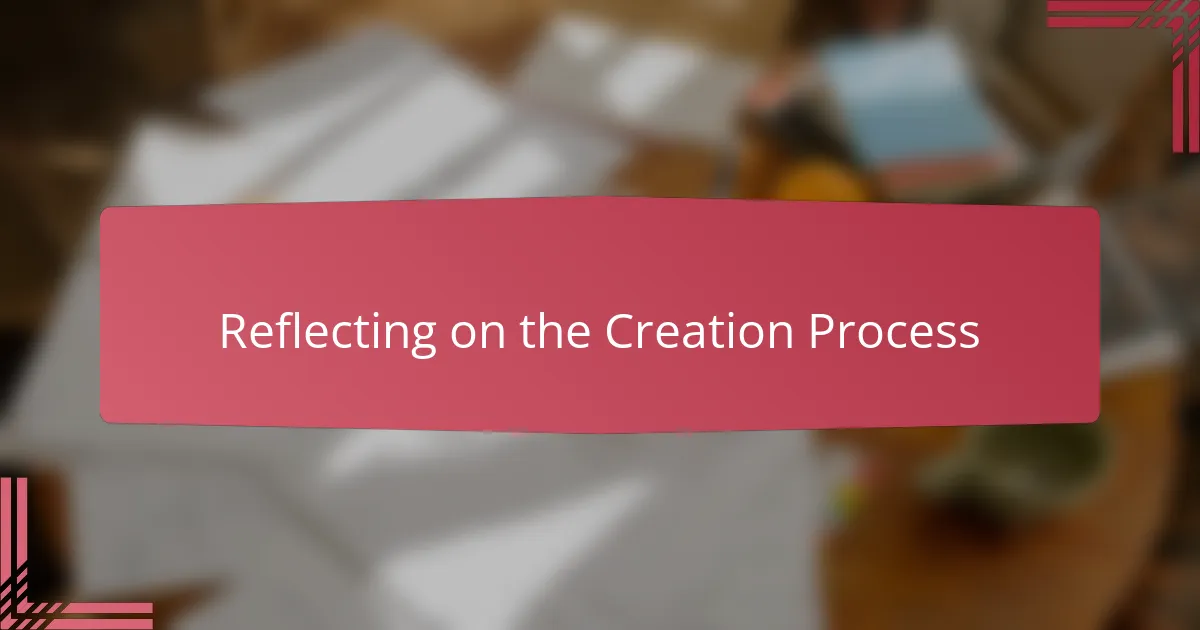
Reflecting on the Creation Process
Reflecting on the creation process, I realized it was as much about trial and error as it was about planning. There were moments when I hit frustrating walls—like figuring out how to make the timeline intuitive without losing depth. Have you ever felt that tension between simplicity and richness? It’s a delicate balance that requires patience and a willingness to adapt.
One thing that struck me deeply was how feedback shaped the final timeline in unexpected ways. I remember a student’s suggestion to link a historical event to a current activist really shifted how I viewed the project—not just as a presentation, but as a living, evolving dialogue. It made me appreciate the collaborative nature of creating educational tools.
Looking back, the process wasn’t just technical; it was a journey of discovery about storytelling and engagement. Each step forced me to think critically about how learners interact with history and activism. Have you ever created something that not only taught others but transformed your own perspective? For me, that’s the true power behind building interactive timelines.